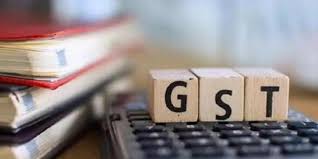Feature
States on board for GST roll out – with riders
 New Delhi:Cutting across party lines, states across the country have expressed willingness to join hands with the central government in rolling out the Goods and Services Tax (GST) regime — but with riders to protect their interests.
New Delhi:Cutting across party lines, states across the country have expressed willingness to join hands with the central government in rolling out the Goods and Services Tax (GST) regime — but with riders to protect their interests.
The GST bill, which was long stuck in the Rajya Sabha where the Narendra Modi government did not possess a majority, was finally passed by parliament’s upper house on Wednesday. The Lok Sabha had passed it last year.
West Bengal Chief Minister Mamata Banerjee sought that as states wanted to give relief to micro and small businesses, they must remain under the control of the states.
Endorsing Banerjee’s views, West Bengal Finance Minister Amit Mitra said the GST’s primary focus was to benefit micro, small and medium enterprises (MSMEs).
“In the single-tax regime, MSMEs must be benefitted. Bigger industries can manage a multiple-tax regime but smaller players are fed up with multiple taxes,” said Mitra, who is also Chairman of the Empowered Committee of State Finance Ministers on the GST regime, in Kolkata.
“Dual control will be allowed for entities with annual turnover of more than Rs 1.5 crore, while small players, with less than Rs 1.5 crore annual turnover, will be in the state’s control,” he said.
Terming the passage of the GST Bill unanimously a historic moment, Karnataka Chief Minister Siddaramaiah said as the GST was the brainchild of the earlier UPA government, the NDA regime had to amend the Bill to meet the demands of the Congress in order to safeguard the interests of the people and the states.
“The GST Bill was originally drafted by the UPA government to usher in the concept of aone nation, one tax. As the NDA government’s Bill had some lacunae, our party suggested certain amendments, which were conceded for its smooth passage in a bipartisan spirit,” he told reporters in Bengaluru.
Siddaramaiah, who also holds the finance portfolio, said Karnataka was ready to implement the GST regime from April 1, 2017.
Himachal Pradesh Chief Minister Virbhadra Singh also said it was the previous Congress-led UPA government that conceived the GST Bill, while rincipal Secretary Finance Shrikant Baldi said the state would definitely be benefitted with the GST.
Bharatiya Janata Party MP Anurag Thakur, who is from Himachal, said the GST would have a positive impact on the Indian economy.
Haryana Finance Minister Capt Abhimanyu announced that the state was prepared to implement the GST regime.
“The state excise and taxation department was preparing a roadmap to implement the GST regime. The concerned officials have been imparted training on how to implement it effectively,” he told reporters in Chandigarh.
Political parties and their leaders in Odisha expressed hope that the GST Bill would bring tax reforms in the country.
“The GST Bill will bring uniform tax rate throughout the country and help in seamless movement of goods and services across the states,” Odisha Finance Minister Pradeep Amat said in Bhubaneshwar, adding that the GST regime would provide more relief to the economy, industry, trade and agriculture.
“The state will also be empowered to tax on services,” Amat asserted.
In Kerala, Jose Sebastian of the Gulati Institute of Finance and Taxation said the e-commerce segment would come under the tax net in the GST regime.
“Being a consumer state, Kerala will get Rs 4,000 crore every year once GST is in place. When GST become a reality, tax revenue which has been going to states from where the goods were purchased, will come to our state,” Sebsatian told IANS in Thiruvananthapuram.
CII’s Kerala State Council chairman Harikrishanan Nair said traders would benefit from GST on account of zero rate tax on exports.
In Maharashtra, Gera Developments Managing Director and CREDAI Vice President Rohit Gera said the GST, should take care of home buyers by ensuring it does not increase the cost by raising the tax incidence on them.
SBI Chairperson Arundhati Bhattacharya said in Mumbai that GST would result in efficiencies by enabling seamless movement of goods and integration of markets across the country.
“The structural transformation of GST in the long term will be enormous and our bank is fully geared to meet the implementation challenges and the necessary IT support will be in place in due time,” she added.
Entertainment
Meghalaya Reserves Legalized Gambling and Sports Betting for Tourists

The State Scores Extra High on Gaming-Friendly Industry Index
Meghalaya scored 92.85 out of 100 possible points in a Gaming Industry Index and proved to be India’s most gaming-friendly state following its recent profound legislation changes over the field allowing land-based and online gaming, including games of chance, under a licensing regime.
The index by the UK India Business Council (UKIBC) uses a scale of 0 to 100 to measure the level of legalisation on gambling and betting achieved by a state based on the scores over a set of seven different games – lottery, horse racing, betting on sports, poker, rummy, casino and fantasy sports
Starting from February last year, Meghalaya became the third state in India’s northeast to legalise gambling and betting after Sikkim and Nagaland. After consultations with the UKIBC, the state proceeded with the adoption of the Meghalaya Regulation of Gaming Act, 2021 and the nullification of the Meghalaya Prevention of Gambling Act, 1970. Subsequently in December, the Meghalaya Regulation of Gaming Rules, 2021 were notified and came into force.
All for the Tourists
The move to legalise and license various forms of offline and online betting and gambling in Meghalaya is aimed at boosting tourism and creating jobs, and altogether raising taxation revenues for the northeastern state. At the same time, the opportunities to bet and gamble legally will be reserved only for tourists and visitors.
“We came out with a Gaming Act and subsequently framed the Regulation of Gaming Rules, 2021. The government will accordingly issue licenses to operate games of skill and chance, both online and offline,” said James P. K. Sangma, Meghalaya State Law and Taxation Minister speaking in the capital city of Shillong. “But the legalized gambling and gaming will only be for tourists and not residents of Meghalaya,” he continued.
To be allowed to play, tourists and people visiting the state for work or business purposes will have to prove their non-resident status by presenting appropriate documents, in a process similar to a bank KYC (Know Your Customer) procedure.
Meghalaya Reaches Out to a Vast Market
With 140 millions of people in India estimated to bet regularly on sports, and a total of 370 million desi bettors around prominent sporting events, as per data from one of the latest reports by Esse N Videri, Meghalaya is set to reach out and take a piece of a vast market.
Estimates on the financial value of India’s sports betting market, combined across all types of offline channels and online sports and cricket predictions and betting platforms, speak about amounts between $130 and $150 billion (roughly between ₹9.7 and ₹11.5 lakh crore).
Andhra Pradesh, Telangana and Delhi are shown to deliver the highest number of bettors and Meghalaya can count on substantial tourists flow from their betting circles. The sports betting communities of Karnataka, Maharashtra, Uttar Pradesh and Haryana are also not to be underestimated.
Among the sports, cricket is most popular, registering 68 percent of the total bet count analyzed by Esse N Videri. Football takes second position with 11 percent of the bets, followed by betting on FIFA at 7 percent and on eCricket at 5 percent. The last position in the Top 5 of popular sports for betting in India is taken by tennis with 3 percent of the bet count.
Local Citizens will Still have Their Teer Betting
Meghalaya residents will still be permitted to participate in teer betting over arrow-shooting results. Teer is a traditional method of gambling, somewhat similar to a lottery draw, and held under the rules of the Meghalaya Regulation of the Game of Arrow Shooting and the Sale of Teer Tickets Act, 2018.
Teer includes bettors wagering on the number of arrows that reach the target which is placed about 50 meters away from a team of 20 archers positioned in a semicircle.
The archers shoot volleys of arrows at the target for ten minutes, and players place their bets choosing a number between 0 and 99 trying to guess the last two digits of the number of arrows that successfully pierce the target.
If, for example, the number of hits is 256, anyone who has bet on 56 wins an amount eight times bigger than their wager.





















